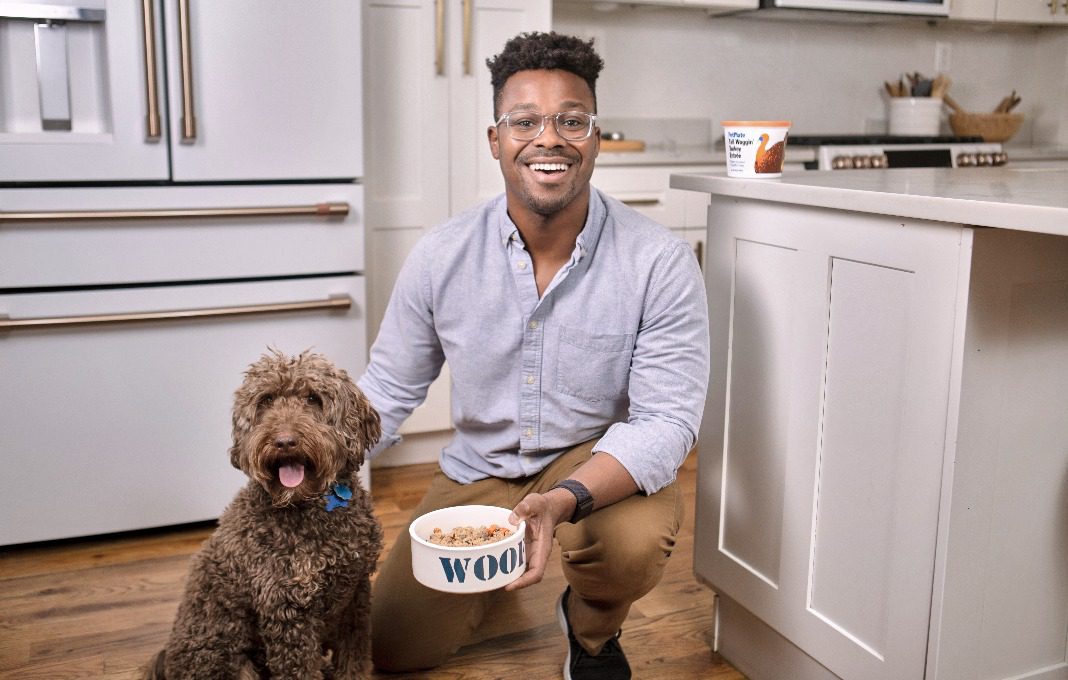Tap into a rising consumer market with strong and seemingly bulletproof demand. Go in on the premium level. Start with heavy investments in products and branding, and let contractors do the manufacturing. Then circle back to doing your own output later as you establish control of more aspects of your value proposition.
This is the formula that has worked for Renaldo Webb as he has built Brooklyn, N.Y.-based PetPlate into a manufacturer of a high-end pet-food brand with eight-figure annual revenues already, and targeting a doubling this year, by capitalizing on pandemic-fueled demand for home-delivered food for furry friends. It shows no signs of abating with the end of the pandemic.
“Pet food is the sexiest unsexy industry out there, growing at a 3% to 4% CAGR, and the only things in the CPG world growing faster than that are seltzer alcohols,” Webb told Chief Executive. “It’s an exciting category that leans into the zeitgeist.”
Does it ever. Americans spent $50 billion on pet food and treats in 2021, the fastest-growing category among consumer packaged goods, with a 13.6% increase over 2020, according to the American Pet Products Association. Overall pet-industry sales reached $124 billion in 2021, in the second consecutive record-setting year for the industry.
The main reason for the boom is obvious: Hundreds of thousands more Americans became pet owners during Covid as they tried to make cocooning as cozy as possible.
“It’s extremely inelastic demand,” said Webb, who nabbed $100,000 in capital on Shark Tank a few years ago, then in 2020 managed to score a $9-million Series A investment in a round led by General Mills’ venture-capital division. “During the Great recession, people were bringing pets back to shelters. But now it’s more like parents almost taking care of their kids. They aren’t giving them up.”
PetPlate’s business model is to charge from about $150 to about $400 a month for extremely carefully concocted pet food, human-grade stuff made out of whole meats and vegetables and so on, in Agriculture Department-approved facilities, delivered to customers’ doorstep — making it what Crunchbase called the “Blue Apron of pet foods.”
Like many entrepreneurs of better-for-you foods, Webb started putting together ingredients — in his case, such as ground beef and carrots— in a local commissary kitchen with advice from a nutritionist. Then, as the business grew, he sought out best-in-class contract manufacturing, which is now done at a plant in Texas and may be expanded to other locations.
But Webb understands the importance of controlling manufacturing in a premium-product business and may eventually consider doing PetPlate’s own manufacturing.
“We’ve been a marketing and product-development-focused business so far,” he said. “Pivoting to also being a manufacturer — and everything that comes with that — will take a little time and a larger team and a larger investment. But you do get that additional quality and control.”
Besides keeping a close eye on manufacturing, here’s how Webb has built the business:
• Why not subscriptions? Webb said that pet-food giant Chewy.com “was a darling during the [pandemic] bubble and the trajectory for them is still strong. Pet food is heavy and people want to do what’s best for their pets, but they don’t want to have to [think] about it.
“I would argue that pet food is one of the best subscription businesses you can think of,” Webb said. “We do extremely well with our retention rate compared with Blue Apron and with human- and beauty-based subscription products.”
• Premiumization is key. It’s expensive to provide PetPlate for dogs, but then aren’t they worth it?
“Some people were nervous about whether people would be willing to spend a premium on something that many people already consider a premium,” Webb said. “As America has gone through its health transformation, that has trickled down to kids and pets. It’s a story line that makes sense to people. Big Food is giving you something that’s bad, and [PetPlate] is better because of healthy ingredients. There’s actually more room for growth in this than in human food.”
And many canines’ diets actually require picky food. “There might be a misconception that this is a nice-to-have product,” Webb said. “But if a dog has a sensitive stomach, your options may be finding kibble with worse ingredient or cooking for your dog. There’s a limited set of options. And once you find something that works, the reasons to leave just aren’t that many as long as you can continue to afford it.”
• Pricing can still be taken. Even in a category growing as quickly and robustly as premium pet food, Webb said, “We were nervous to elevate prices” in America’s highly inflationary environment these days. But PetPlate imposed a price hike of just under 10% recently, its first in a couple of years, anyway.
“It didn’t affect our business,” he said. “So as a business person, you say, ‘Should we do more?’ But what drove a lot of the price increase was [rising costs] in protein markets.
























































![Social Media Spring Cleaning [Infographic] Social Media Spring Cleaning [Infographic]](https://imgproxy.divecdn.com/9e7sW3TubFHM00yvXe5zvvbhAVriJiGqS8xmVFLPC6s/g:ce/rs:fit:770:435/Z3M6Ly9kaXZlc2l0ZS1zdG9yYWdlL2RpdmVpbWFnZS9zb2NpYWxfc3ByaW5nX2NsZWFuaW5nMi5wbmc=.webp)
![5 Ways to Improve Your LinkedIn Marketing Efforts in 2025 [Infographic] 5 Ways to Improve Your LinkedIn Marketing Efforts in 2025 [Infographic]](https://imgproxy.divecdn.com/Hv-m77iIkXSAtB3IEwA3XAuouMwkZApIeDGDnLy5Yhs/g:ce/rs:fit:770:435/Z3M6Ly9kaXZlc2l0ZS1zdG9yYWdlL2RpdmVpbWFnZS9saW5rZWRpbl9zdHJhdGVneV9pbmZvMi5wbmc=.webp)















